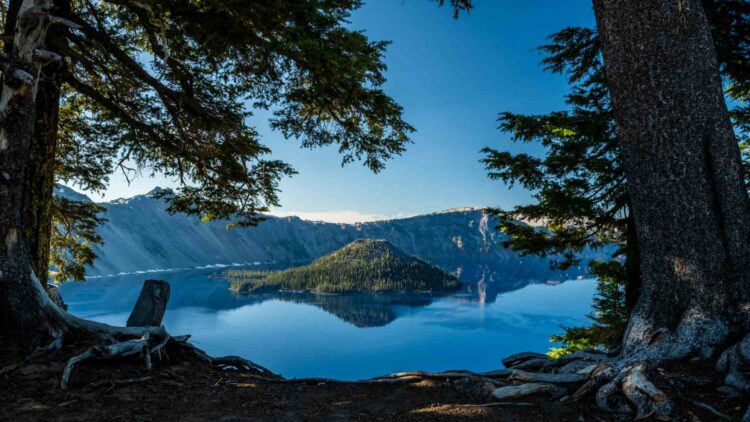National parks are a treasure, and they deserve to be properly maintained. While many people might think that is a preposterous idea, after all, nature is self sufficient and what can humans do to maintain it that it cannot do itself after millennia, the reality is that most places do not have the capacity to withstand the amount of tourism we put upon them nowadays without some significant help. One of such places is Crater Lake National Park which will be undergoing some major rehabbing for the next two years.
The Crater Lake National Park, a wonderful gem
While many may not have heard of this slice of paradise, just a quick Google search can reveal the wonders that a person can find there. It is known for being the deepest lake in the country, which caters to both swimmers and boats during the summer season despite its frigid temperatures. With Cleetwood Cove Trail as its only access point, it is incredibly popular with those who want to escape reality for a day and maybe take a death defying plunge from a 35-foot cliff face.
But as amazing as this all sounds, those who want to do it again will have to wait. The increase in tourism has eroded the area and a rehabilitation project is sorely needed to ensure that this beautiful escape remains accessible for generations to come.
The park’s public information officer, Marsha McCabe explained to SFGATE that the access to the lake will be stopped at the end of this summer and that the only people who will be permitted to approach the lake will be park scientists. For those who still wish to visit the area, there is an elevated rim that will allow tourists to still enjoy the view and take pictures of the lake through the refurbishment efforts.
Nestled at the southern end of the Cascades, this lake took shape over 7,700 years ago when Mount Mazama erupted and collapsed, leaving behind a massive crater. Over time, rainfall and melting snow filled the 1,943-foot basin, forming the deepest lake in the United States and even nowadays its striking blue waters remain exceptionally clear, as the absence of incoming streams keeps it free of sediment, allowing light to penetrate and scatter, enhancing its vivid color.
The lake’s popularity has contributed to the upcoming closure of Cleetwood Cove Trail as high summer foot traffic accelerates erosion in the caldera’s fragile soil, which in turn causes damage to retaining walls when winter rains arrive. Additionally, sections of the trail have been flagged as rockfall hazard zones. Infrastructure repairs are also necessary, including securing the marina’s bulkhead and dock system after a 2016 failure. Meanwhile, composting restrooms at the trail’s end are struggling to accommodate the number of visitors, as outlined in the park’s rehabilitation project proposal.
All these problems have compounded over the years and it is time to fix them, but, because of the seasonal nature of the park there is a very short amount of time each year that can be dedicated to making the necessary repairs. This means that the closing is not optional, but a necessity. As McCabe explained “The significant annual snowfall at the Crater Rim limits access to the site and construction work to a few summer months.”
Assessments will begin this summer to ensure that all repairs are accounted for and to prepare cost proposals for the project. After all bids are in, the park will select a contractor, who will then start on prep work, likely after the season has ended, so it will have to be pushed back to next summer, after which the full scale of repairs will start.

